

Anthony Crawford
1990 Lamborghini Countach review
6 Days Ago
General Motors' has shared some details on what vehicles will be part of its ambitious electric vehicle expansion, with everything from bush-bashing Hummers to a hand-built Cadillac.

News Editor
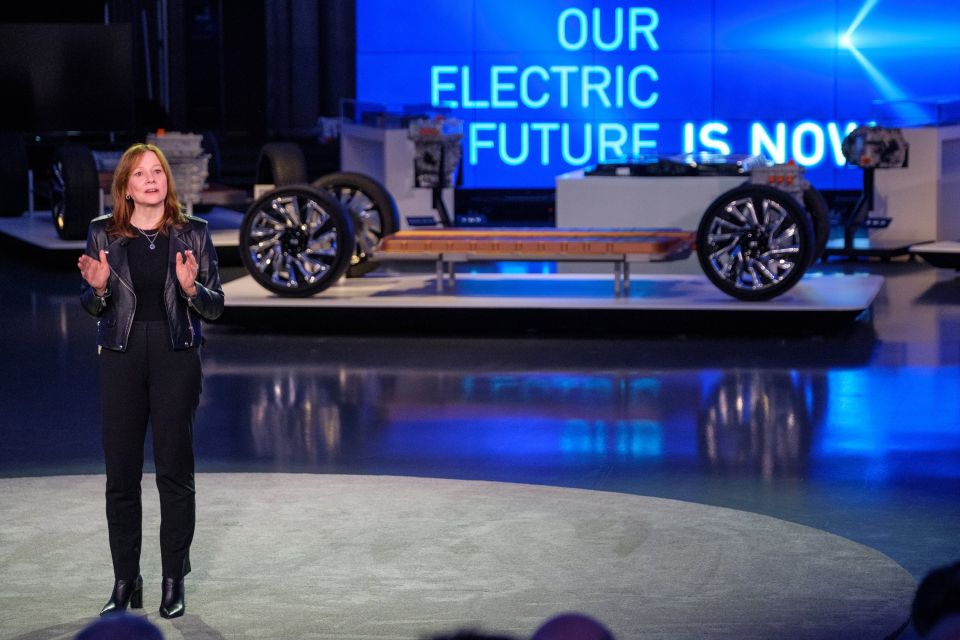

News Editor
General Motors wants to sell one million electric vehicles per year in China and the USA by the end of 2025. To do that, it’ll need to have a lot more vehicles than the Chevrolet Bolt and its cadre of Chinese-market platform-mates.
The company is aiming to roll out 20 new electric vehicles by 2023 and, in its recently published 2019 Sustainability Report, the American giant has outlined 13 of these vehicles. These models were revealed to members of the press at the company’s EV Day in March.
GM is rolling out a modular electric vehicle architecture that’ll be used for cars and SUVs. It’s also introducing the BT1 EV platform, designed for large SUVs and pickup trucks.
The company is also developing new battery technology, named Ultium, which it’ll license to other automakers. Honda is one automaker that’s working with GM to use the new technology, which will feature in two upcoming Honda-badged vehicles.
All up, GM aims to allocate US$20 billion (A$28.6 billion) in capital and engineering resources to electric and autonomous vehicle development between now and 2025.
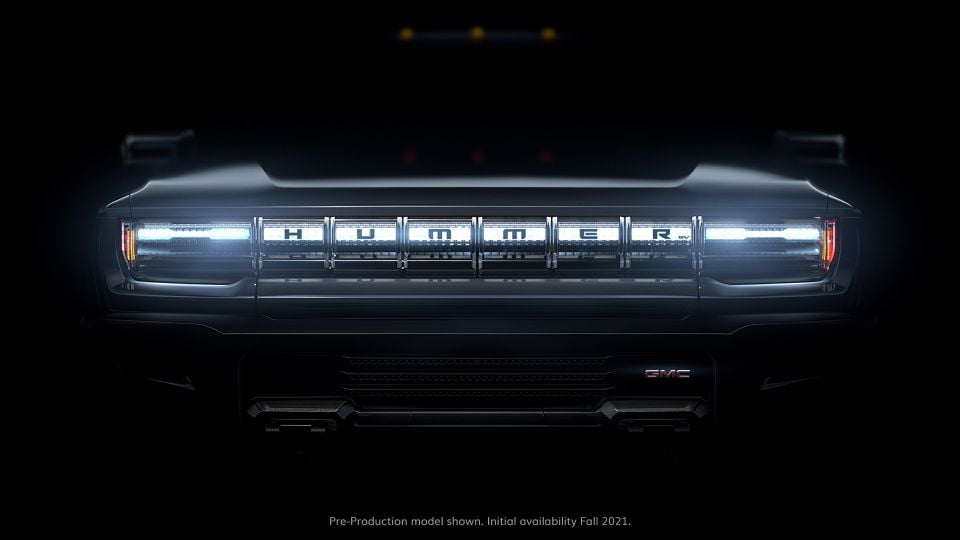
We’ve already seen teasers of the resurrected Hummer, now sitting under the GMC pickup and SUV brand. The GMC Hummer EV pickup truck will use the BT1 platform and produce upwards of 745kW.
GM has confirmed it’ll also have an SUV counterpart that “will be configured as an off-road-capable SUV.”

GM’s already released a teaser image of its upcoming Lyriq SUV, which is due to start production in 2022. It’s sized similarly to the brand’s two-row XT5 SUV, a rival to the Lexus RX.
Cadillac’s electric SUV range will mirror its internal combustion engine SUV range. After the Lyriq, Cadillac will release an EV sized similarly to its Audi Q3-rivalling XT4 and a three-row SUV that’ll likely have a similar footprint to its Volvo XC90-rivalling XT6.
The brand will also release a second three-row SUV that “builds on the DNA of the brand’s highly successful Escalade”. Expect a jumbo-sized, flashy EV SUV, then.
Cadillac’s electric range will be crowned with a “statement vehicle”, the ultra-exclusive, ultra-luxury Celestiq. It’ll be a bespoke, hand-assembled model of which Cadillac will produce around 1.2 examples of each day. Thus far, it’s the only EV passenger car that’s been announced for Cadillac.

GM has announced three additional EVs for its volume brand.
The Bolt EUV will use the current Bolt’s BEV2 architecture, first introduced in 2016. With styling inspired by the Chevrolet Blazer – itself inspired by the Camaro – it’s expected to share elements with the recently revealed, Chinese-exclusive Buick Velite 7 and Chevrolet Menlo (above).
It’ll be the first product outside of the Cadillac brand to receive GM’s Super Cruise semi-autonomous driving technology.
Sitting above the Bolt EUV will be an electric SUV which GM describes only as “mid-sized”. Translation for Australians: something sized similarly to a Ford Endura.
Chevrolet will also release an electric full-size pickup truck, sized similarly to the Silverado, which promises over 643km of electric range.

GM’s premium brand, which slots between Chevrolet and Cadillac, will receive two electric SUVs. One will feature conventional SUV styling for a more practical interior, while the other will feature more “expressive” proportions.
Before those models arrive, Buick’s Chinese range will be bolstered with the arrival of the Bolt-based Velite 7 (above).
The brand now exclusively sells SUVs in the US market and shares showroom space with the GMC brand. In China, however, it offers a range of passenger cars and SUVs. Last year, GM sold more than four times as many Buicks in China as it did in the US.

Additionally, GM’s Cruise Origin autonomous vehicle will use the new electric vehicle architecture. GM has partnered with Honda to develop this vehicle.
In the report, GM also says, “In the past, EV design placed great importance on differentiating the EV visually from its ICE counterparts. No more.”
“The flexibility of this new platform frees us to proportion vehicles to meet unique brand personas and to design around vehicle and customer segment needs.”

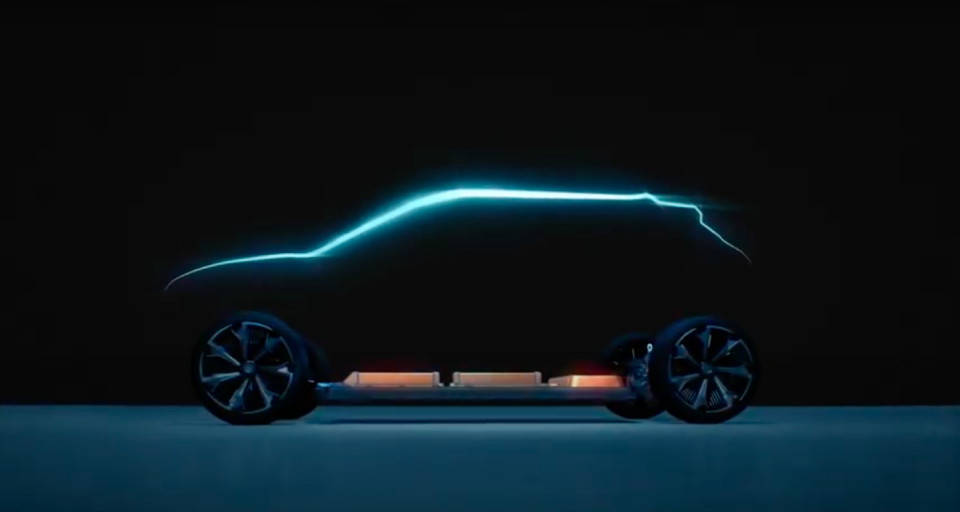
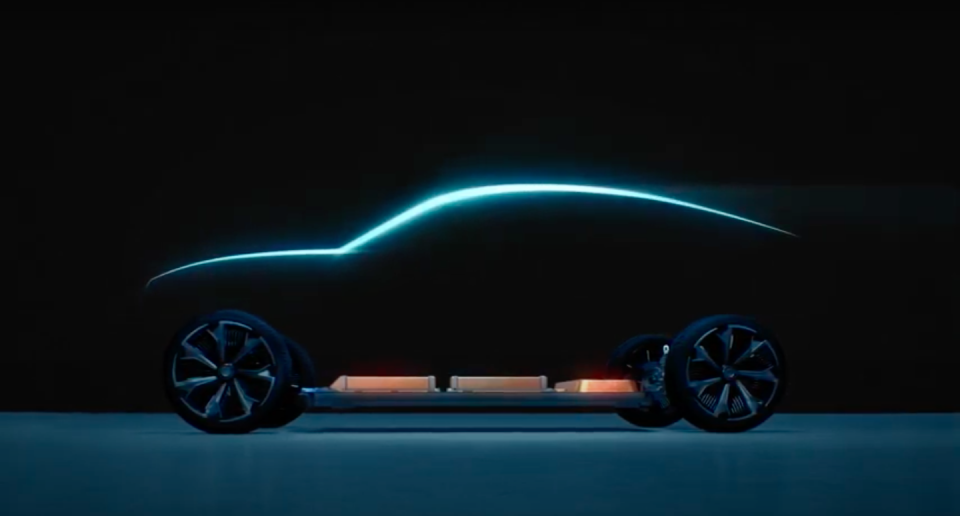
GM released a teaser video earlier this year that shows the various silhouettes of its upcoming EV models. In addition to the distinctive shapes of the GMC Hummer EV and Cruise Origin, there was an outline that looked suspiciously similar to that of the Chevrolet Camaro, plus a hatchback-type silhouette and a rakish one that could be the “expressive” Buick SUV.
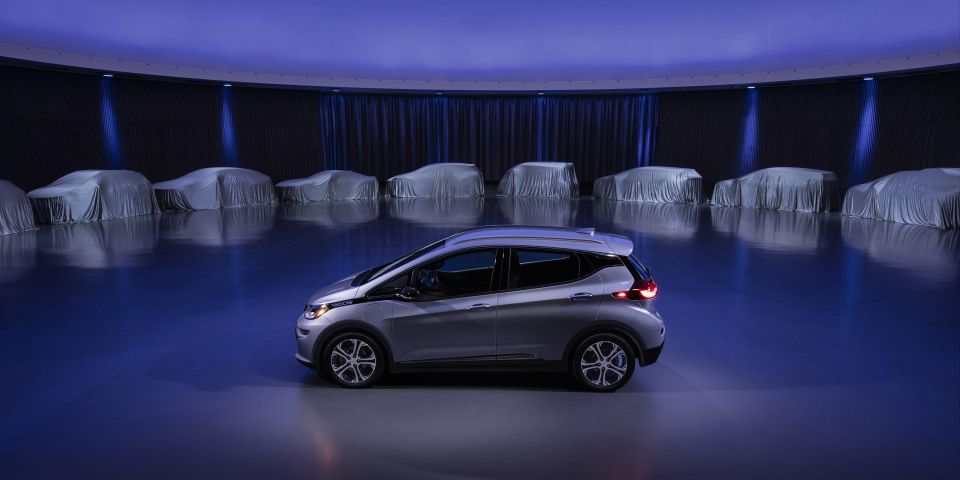
GM first made the commitment to release 20 EVs by 2023 back in 2017 and, in the 2019 Sustainability Report, it confirmed the target remains the same.
In 2017, it also released a teaser image of many of its EVs under wraps. While it’s possible some of these product plans have changed since then, you can clearly make out a distinctly Camaro-shaped vehicle.
The rest appear to be SUVs, though there’s an intriguingly low, wedgy wagon-shaped model to the right of the Cruise Origin.
A slide from a presentation delivered by CEO Mary Barra that year lists most of the fleet of SUVs confirmed by GM this year plus a light-commercial vehicle, an “efficient low-roof car” and an “expressive lux-low roof”. The latter is likely the Cadillac Celestiq.
GM isn’t just investing in EVs to help reduce emissions. The company aims to have its factories producing zero waste by 2025, while it’s set 2030 as the target to have all its US factories running on renewable energy.
By the same year, it wants half the content of its vehicles to be made from recycled materials. By 2040, it aims to have all its factories throughout the world running on renewable energy.
William Stopford is an automotive journalist based in Brisbane, Australia. William is a Business/Journalism graduate from the Queensland University of Technology who loves to travel, briefly lived in the US, and has a particular interest in the American car industry.


Anthony Crawford
6 Days Ago


Matt Campbell
5 Days Ago


James Wong
4 Days Ago


Max Davies
2 Days Ago


Josh Nevett
2 Days Ago


Josh Nevett
21 Hours Ago